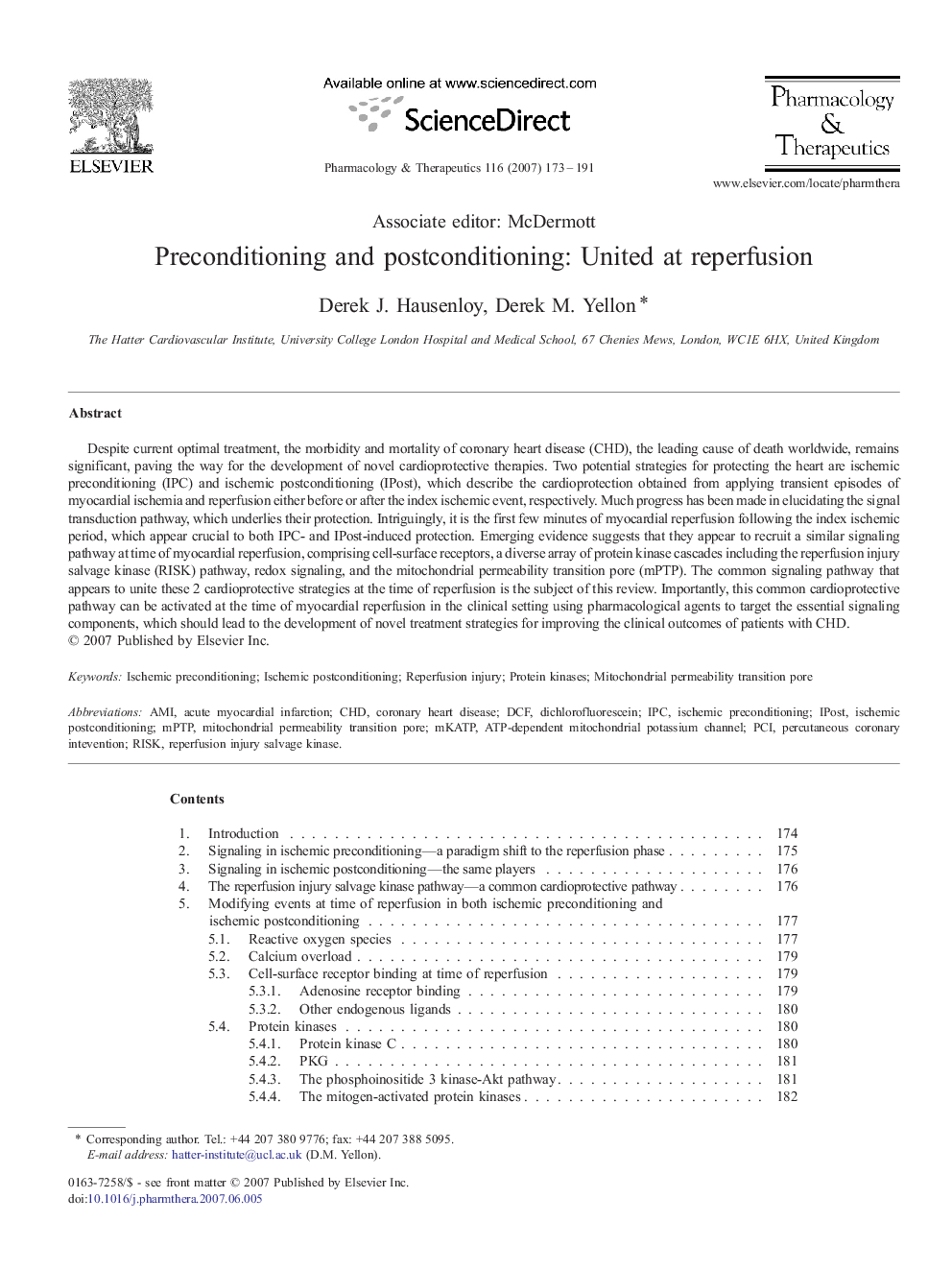| Article ID | Journal | Published Year | Pages | File Type |
|---|---|---|---|---|
| 2564238 | Pharmacology & Therapeutics | 2007 | 19 Pages |
Despite current optimal treatment, the morbidity and mortality of coronary heart disease (CHD), the leading cause of death worldwide, remains significant, paving the way for the development of novel cardioprotective therapies. Two potential strategies for protecting the heart are ischemic preconditioning (IPC) and ischemic postconditioning (IPost), which describe the cardioprotection obtained from applying transient episodes of myocardial ischemia and reperfusion either before or after the index ischemic event, respectively. Much progress has been made in elucidating the signal transduction pathway, which underlies their protection. Intriguingly, it is the first few minutes of myocardial reperfusion following the index ischemic period, which appear crucial to both IPC- and IPost-induced protection. Emerging evidence suggests that they appear to recruit a similar signaling pathway at time of myocardial reperfusion, comprising cell-surface receptors, a diverse array of protein kinase cascades including the reperfusion injury salvage kinase (RISK) pathway, redox signaling, and the mitochondrial permeability transition pore (mPTP). The common signaling pathway that appears to unite these 2 cardioprotective strategies at the time of reperfusion is the subject of this review. Importantly, this common cardioprotective pathway can be activated at the time of myocardial reperfusion in the clinical setting using pharmacological agents to target the essential signaling components, which should lead to the development of novel treatment strategies for improving the clinical outcomes of patients with CHD.
